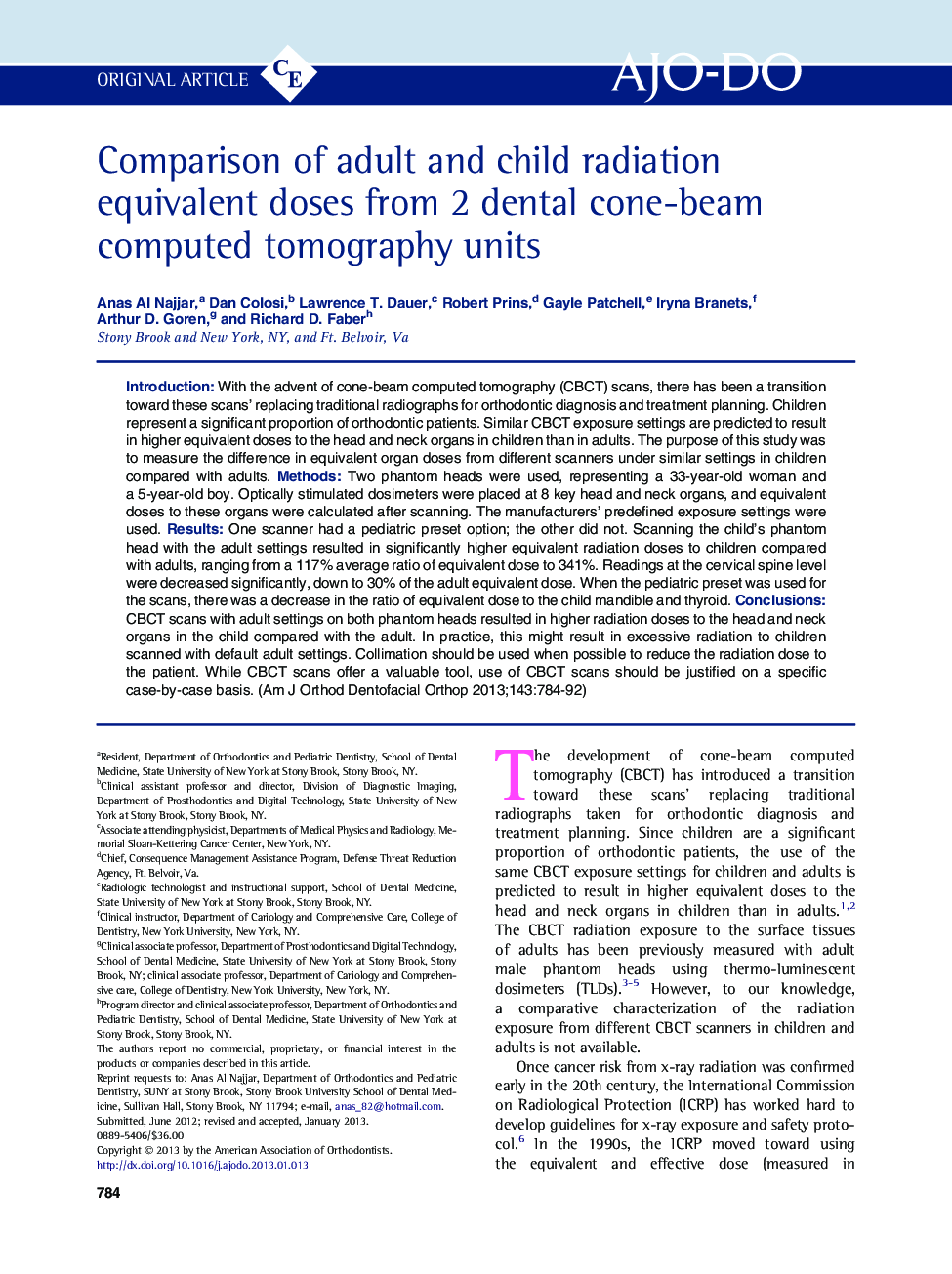| Article ID | Journal | Published Year | Pages | File Type |
|---|---|---|---|---|
| 3116873 | American Journal of Orthodontics and Dentofacial Orthopedics | 2013 | 9 Pages |
IntroductionWith the advent of cone-beam computed tomography (CBCT) scans, there has been a transition toward these scans' replacing traditional radiographs for orthodontic diagnosis and treatment planning. Children represent a significant proportion of orthodontic patients. Similar CBCT exposure settings are predicted to result in higher equivalent doses to the head and neck organs in children than in adults. The purpose of this study was to measure the difference in equivalent organ doses from different scanners under similar settings in children compared with adults.MethodsTwo phantom heads were used, representing a 33-year-old woman and a 5-year-old boy. Optically stimulated dosimeters were placed at 8 key head and neck organs, and equivalent doses to these organs were calculated after scanning. The manufacturers' predefined exposure settings were used.ResultsOne scanner had a pediatric preset option; the other did not. Scanning the child's phantom head with the adult settings resulted in significantly higher equivalent radiation doses to children compared with adults, ranging from a 117% average ratio of equivalent dose to 341%. Readings at the cervical spine level were decreased significantly, down to 30% of the adult equivalent dose. When the pediatric preset was used for the scans, there was a decrease in the ratio of equivalent dose to the child mandible and thyroid.ConclusionsCBCT scans with adult settings on both phantom heads resulted in higher radiation doses to the head and neck organs in the child compared with the adult. In practice, this might result in excessive radiation to children scanned with default adult settings. Collimation should be used when possible to reduce the radiation dose to the patient. While CBCT scans offer a valuable tool, use of CBCT scans should be justified on a specific case-by-case basis.
